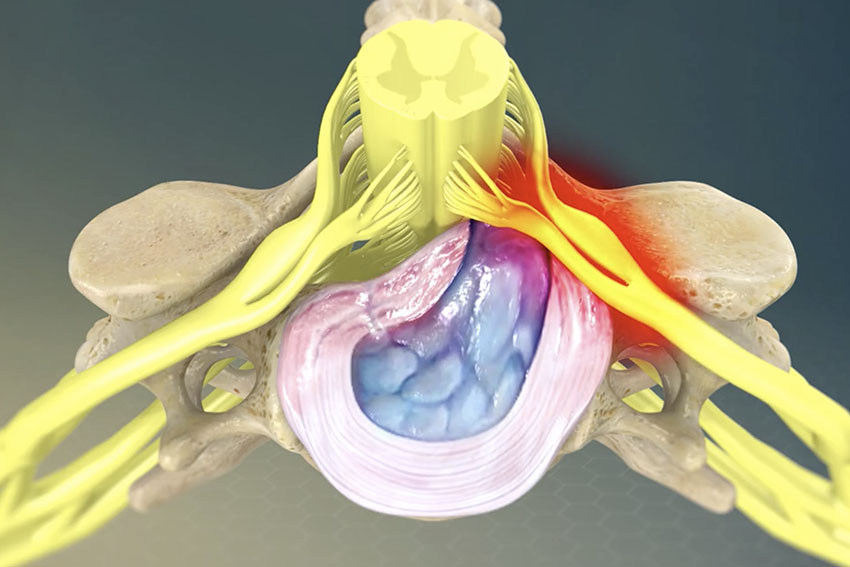
Normal Disc Anatomy
The intervertebral discs are composed of a nucleus pulposus and annulus fibrosis. The nucleus pulpous is a soft jelly like material held in place by the annulus fibrous. The annulus fibrosis is a hard fibrous outer covering surrounding the nucleus pulposus. Imagine a jelly dount. The jelly is the nucleus pulpous and the dough is the annulus fibrosis.
Bulging Discs
Initially the disc is water filled, but as people age the disc drys out and becomes brittle, which may lead to cracks in the annulus fibrosis. This may allow the nucleus to herniate into the spinal canal with the annulus or through a hole in the annulus.
Annular tears may cause severe low back pain. The bulging disc may pinch, irritate or damage nearby nerves causing severe pain shooting down the arms or legs, associated with pain, numbness and tingling. In severe cases it may affect the persons ability to control his bowel and bladder function.
Treatment of Bulging Discs
Initial treatment of bulging discs is rest, non steroidal anti-inflammatories drugs like ibuprofen, physical therapy and steroid injections. If back pain persists, surgery at our Hackettstown or Newton spinal clinic should be considered. Traditional surgery involved large skin incisions, bone removal and significant post-operative pain.
Today bulging discs can be removed with spinal endoscope, often called Laser Spine Surgery, available to patients at our Hackettstown and Newton clinics. The surgery is done through a small 1/3 inch skin incision using an endoscope, which is small camera placed inside of the spine to shave off the bulging disc under direct visualization. After the surgery is complete, the scope is removed and bandaid is placed over the incision. Patients are discharged home the same day with minimal pain and often do not require any post-operative pain medication.
